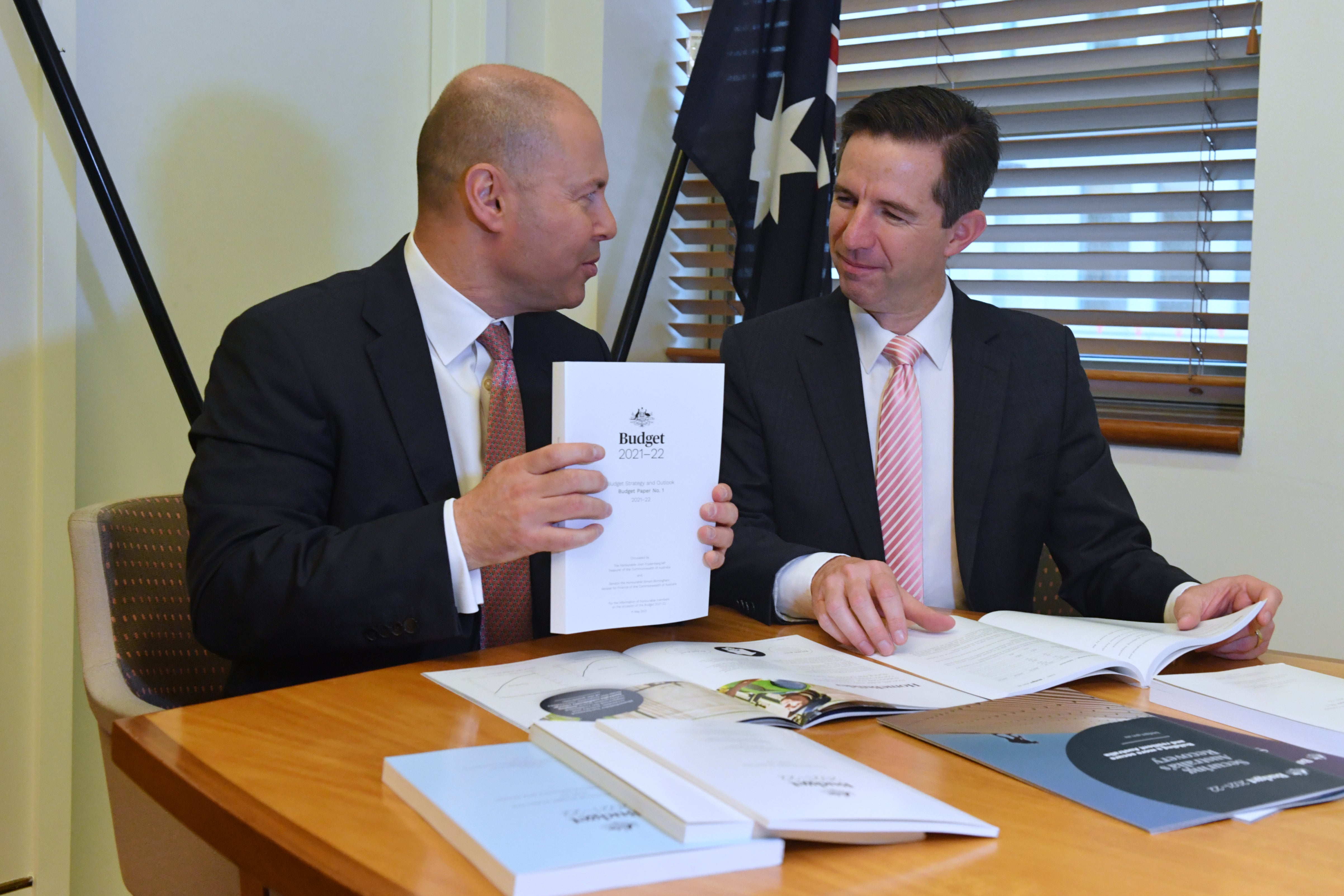Australia to reveal big-spending plan for next fiscal year
The Australian government will release its big-spending economic plan for the next fiscal year aimed at creating jobs and repairing pandemic damage and designed with an eye toward winning votes at looming general elections

Your support helps us to tell the story
From reproductive rights to climate change to Big Tech, The Independent is on the ground when the story is developing. Whether it's investigating the financials of Elon Musk's pro-Trump PAC or producing our latest documentary, 'The A Word', which shines a light on the American women fighting for reproductive rights, we know how important it is to parse out the facts from the messaging.
At such a critical moment in US history, we need reporters on the ground. Your donation allows us to keep sending journalists to speak to both sides of the story.
The Independent is trusted by Americans across the entire political spectrum. And unlike many other quality news outlets, we choose not to lock Americans out of our reporting and analysis with paywalls. We believe quality journalism should be available to everyone, paid for by those who can afford it.
Your support makes all the difference.The Australian government will release its big-spending economic plan for the next fiscal year on Tuesday designed to create jobs and repair pandemic damage and with an eye toward winning votes at looming general elections.
Treasurer Josh Frydenberg said the economy was already recovering from the pandemic and his economic blueprint for the fiscal year starting on July 1 would create more economic strength.
“We must secure Australia’s economic recovery. Tonight’s budget will do exactly that,” Frydenberg told reporters at Parliament House.
“Tonight’s budget will invest in infrastructure and skills to create more jobs and provide incentives to businesses to do what they do best -- to hire, to innovate and to grow,” he added.
The pandemic last year derailed the political calendar that sets the budget as an annual event in May. The 2020-21 budget was delayed until October. It forecast a deficit of 214 billion Australian dollars ($168 billion) in the current fiscal year. That deficit was revised down to AU$109 billion ($85 billion) in a December review.
Economists expect an even smaller deficit of around AU$80 billion ($63 billion) to be forecast Tuesday, with factors including high prices paid by China for iron ore improving the nation’s bottom line.
With Prime Minister Scott Morrison to call an election within 10 months, his conservative coalition has said paying down debt will not be a priority in the 2021-22 budget.
The government has said it would not focus on reducing debt until the unemployment rate was below 5%. The jobless rate was 5.6% in March.
Australia’s benchmark cash interest rate was been at a record low of 0.1% since November and the central bank has said it will not be reduced further.
Australia has been relatively successful in containing the spread of the coronavirus. However there have been criticisms of the slow vaccination rollout.
The rollout began in February with plans to have 4 million doses of Pfizer and AstraZeneca administered in a population of 26 million by the end of March. But by Monday, only 2.66 million doses had been injected.
Morrison is expected to wait until many more people are inoculated before he seeks a fourth three-year term for his government at an election.